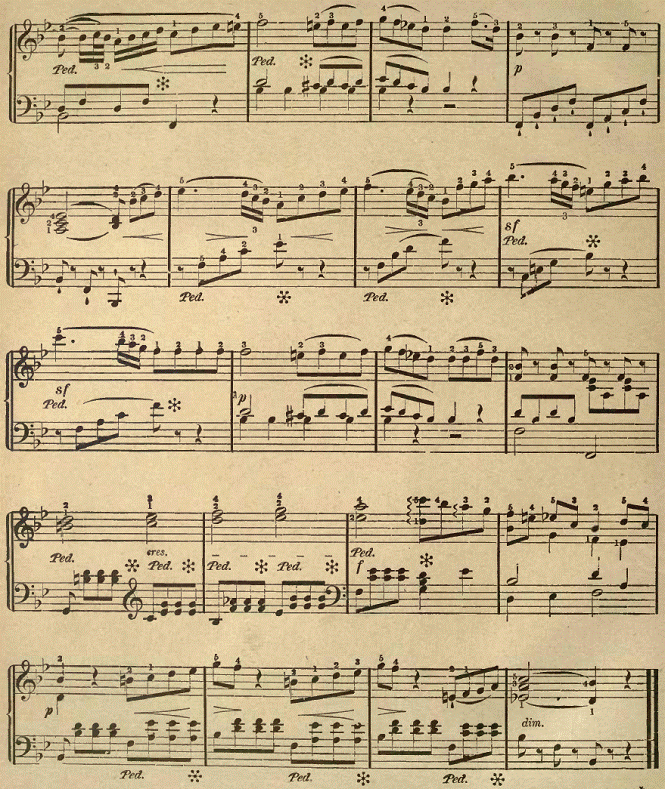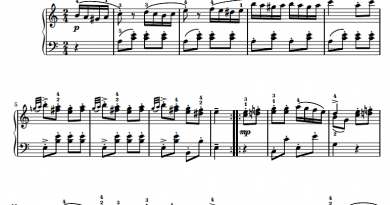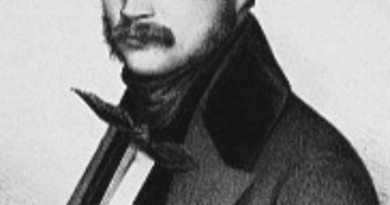B flat major scale on the piano – Romanza by Mozart

Note to the teacher: explain why two flats are needed in the scale. The fingering in this scale fifers essentially from that of the preceding ones. Inasmuch as it begins with one of the black keys, it can, therefore, not begin with the thumb, but starts with the first finger, gringing the thumb on C and F. In the left hand the scale begins with the second finger, bringing the thumb on D and A.

Considerations about the B flat major scale
B flat major is a scale based on Bb, consisting of the pitches Bb C, D, Eb , F, G, A, and Bb. Its key signature consists of two flats.
G minor is its relative minor and Bb minor is its parallel minor.
Bb major is a suitable key for most wind instruments, especially those for which it is their home key, such as clarinets, trumpets, and saxophones in Bb.
Haydn’s Symphony Number 98 is the first symphony he wrote in that key in which he included trumpet and timpani parts. He wrote the timpani part at actual pitch with an F major key signature a procedure that made sense since he limited that instrument to the tonic and dominant pitches. Many editions of the work, however, use no key signature and specify the instrument as “Timpani in Bb-F”. Five of Mozart’s piano concerts are in Bb major.
Piano Romanza by Mozart in B flat major key
Wolfgang Amadeus Mozart, the composer of this Romanza, was one of the world’s greatest composers. He was also a pianist of the highest order. Mozart was born in Salzburg, on the 27th of January, 1756, and died at Vienna, on the 5th of December, 1791.
The spot where he is buried is not known. Mozart produced works of every style from the Opera and the Symphony down to the Sonata and little Minuet, all of which bear the marks of his great genius.
The Romanza is taken from D minor Concerto.
He wrote many Concertos and among them the one in D minor is a general favorite. A Concerto is a composition designed to enable a virtuoso to display his skill upon an instrument, hence there are Concertos for various instruments, such as the violin, flute, organ, piano, etc.
The following piece is taken from a piano Concerto. The Concerto, like the Sonata, consists of a number of parts; the Romanza is a part of the slow movement. In the original, it is written for piano with orchestral accompaniment.




